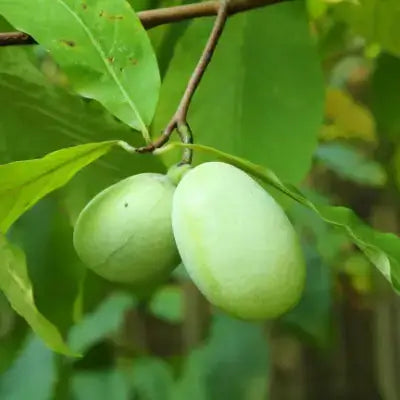The Pawpaw Tree, also known as Asimina triloba, is a native plant to North America. It is usually anywhere from 15 to 20 feet high and between 15 and 20 feet wide.
They are easy to care for. They only need a little water or fertilizer to grow. They can be planted in almost any type of soil and need only sunlight, water, and good drainage to thrive. They need full sun to thrive. They will grow in partial shade, but it is best to plant them where they will receive plenty of sunshine throughout the day. The trees do not back up yearly like some other types of trees. Instead, they grow at different rates depending on how much sunlight and water they receive.
Pawpaw tree leaves are long, serrated, and dark green during spring and summer but turn yellow or red in fall before dropping off entirely by wintertime. The flowers on them are white or pinkish-white with five petals each, similar in appearance to lilac flowers but smaller than lilac blossoms. They are native to North America and grow naturally in the eastern United States from Canada to Georgia and west as far as Iowa, Missouri, and Texas. They also grow wild in Mexico and Central America.
What Environments Do Pawpaw Trees Grow In
They prefer rich, loamy soil with good drainage but tolerate most conditions except standing water or drought. The ideal temperature range for the trees is between (18°C) and (29°C), although they will tolerate temperatures up to 100°F (38°C).
Pawpaw Trees are edible, but there is no evidence that they are toxic if eaten in moderation. However, large quantities of raw seeds can cause gastrointestinal upset and diarrhea when consumed by humans and animals.
Watering Pawpaw Trees
Sow the seedling at the same depth it grew in its pot and water daily until it is established. You should see some growth within two to three weeks after planting your seedlings in its new home.
Way Down Yonder in the Paw Paw Patch
Did you grow up singing that song about pawpaws?
Did you know what they were back then? Are you still unsure now? Most of us are.
Believe it or not, the paw is the most significant fruit from North America. How can a fruit so big still be so unknown?
Most supermarkets don't carry them. Neither do most neighborhood nurseries. Also known as Michigan Banana or Custard Fruit, it tastes like a combination of banana and papaya. It has high protein for fruit, making it a delicious and nutritious addition to your fruit bowl. A good tree for first-timers to try out has few pests and does not grow so big to get overwhelming.

